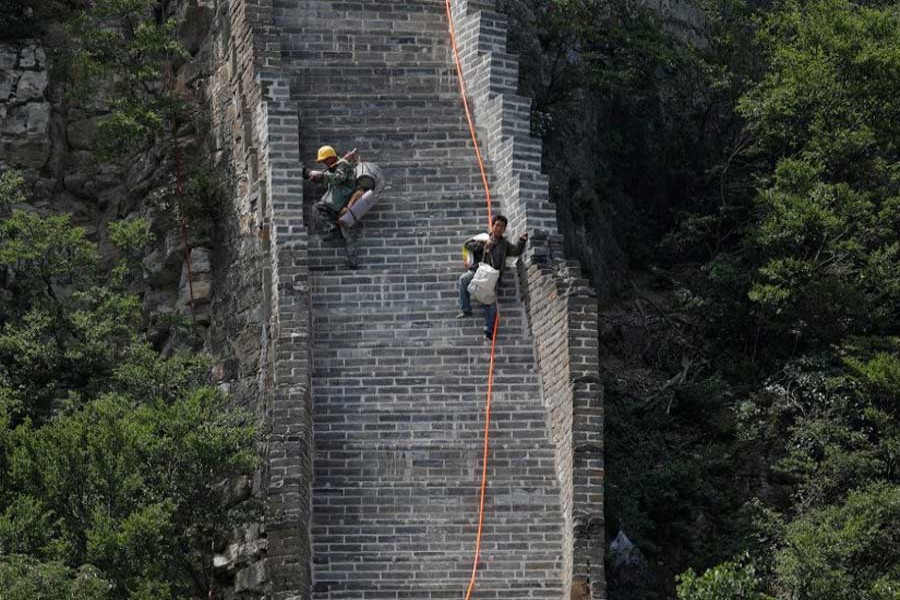China likely carried most of its strong economic momentum from last year into the first quarter of 2018, with government crackdowns on financial risks and industrial pollution dragging less on activity than earlier expected, a Reuters poll showed.
Beijing is looking to keep the economic balancing act intact even as it faces rising trade tensions with its largest trading partner, the United States, that could impact billions of dollars in cross-border trade.
A poll of 60 economists showed growth in gross domestic product likely eased marginally to 6.7 per cent in the first quarter from a year earlier, compared with the 6.8 percent clip in the previous two quarters.
At the start of the year, analysts were pencilling in a first-quarter slowdown to 6.6 per cent.
The consensus forecast indicates growth remained comfortably above the government’s target of around 6.5 per cent for the full year, which could give policymakers more confidence to step up efforts to reduce risks in the financial system and clean up the environment.
China’s economic data so far this year has pointed to steady if slightly slower growth from 2017, with factory output holding up despite smog controls and consumer spending still relatively resilient.
Central bank governor Yi Gang said on Thursday that first quarter economic data has so far been slightly better than expected.
China will release first quarter GDP on Tuesday, along with March industrial output, retail sales, property sales and investment, and fixed asset investment data.
Economists in the poll estimated GDP grew 1.5 per cent quarter-on-quarter, easing from 1.6 per cent in the fourth quarter, though only 15 analysts gave sequential forecasts.
Data on Friday showed export growth slowed in the first quarter in yuan terms, indicating overseas demand may not provide the same boost to overall GDP as it did last year, when the economy posted its first pick-up in growth since 2010.
Analysts say the main risk to China’s economy is now centered on the escalating trade dispute with the United States.
Washington and Beijing have threatened tit-for-tat tariffs in recent weeks, stemming from US accusations of unfair Chinese trade practices.
But no hard timeline has been set by either side for implementation, offering hope of a compromise that would reduce the fallout for both sides and collateral damage for other trade-reliant Asian economies plugged into China’s supply chains.
“Both the choice of Section 301 and the number of products included in the list under investigation point to the US protectionist wind against China being very different, and frankly much more worrisome, than past ones,” Alicia Garcia Herrero, chief economist for Asia Pacific at Natixis, said in a note on Monday.
A researcher with China’s state planning agency said last week that China’s economy will see little impact from the trade dispute, as the country’s vast domestic market can compensate for any external impact.
Separate data on Friday showed China is making solid progress in reining in off-balance sheet lending that largely prompted the sweeping crackdown by regulators.
According to Reuters, total credit in the economy in the first quarter fell nearly 20 per cent on-year, though some economists think Beijing will not tap the brakes too hard and risk a sharper economic slowdown.
The “sharp decline in March is unlikely to be sustained over (an) extended period of time”, economists at China International Capital Corporation said in a note Friday.
China “will still strive to strike the balance between the medium-long term goal of financial deleveraging vs. maintaining relatively stable liquidity conditions and growth momentum,” they wrote.
While economic growth could bounce back in spring due to seasonal factors such as a pick-up in construction, analysts still maintain that activity in China will start to cool eventually, weighed down by a cooling property market and rising borrowing costs.


